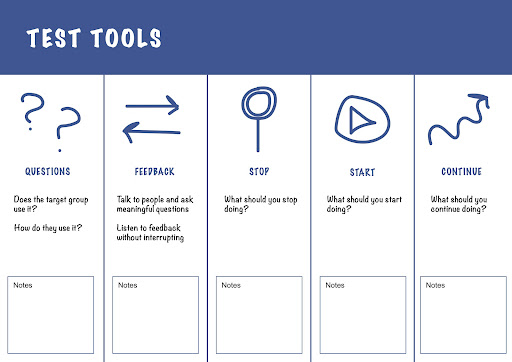DESIGN THINKING STAGES
“The process does not always have to go 100% by the book in order to be successful.”
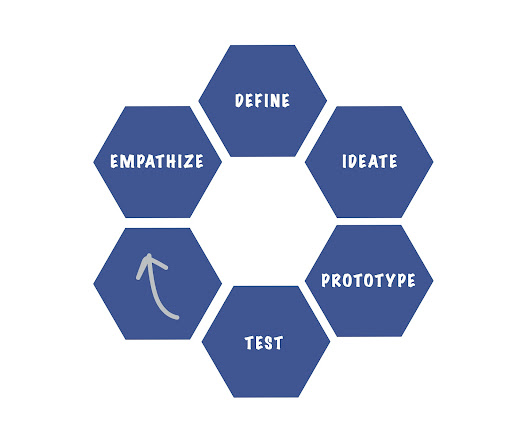
What is Design Thinking?
Design thinking is a structured process that focuses on process-solving through developing creativity and innovation skills. It proceeds through different stages that aim at landing on a solution that effectively solves the possible problem.
Alternatively, the process can be followed to create something new – whether we are talking about a product, a service or a novel way of teaching. It encourages thinking outside the box and focuses on the users’ needs.
You can read more about the different stages by downloading the guidebook.
1 EMPATHISE
In order to be able to create genuinely effective solutions, it is crucial to understand the problem thoroughly. What actually is the problem here and why does it need to be solved? What needs to be done differently or changed for things to work out better?
You might already have a specific question in mind which you wish to find an answer to, or you might have a problematic topic which requires elaboration to get to the roots of your problem(s).
What do you already know about the problem?
What do you want to learn about this topic?
How do others see or feel about it?
Be curious. Ask questions. Listen. Don’t judge.
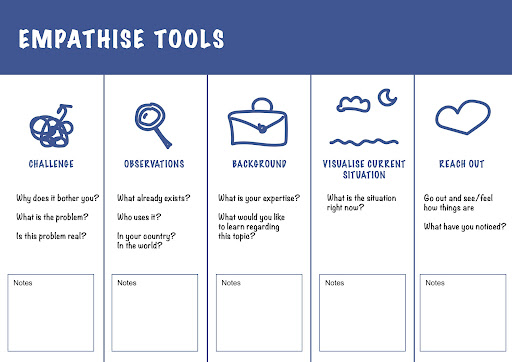
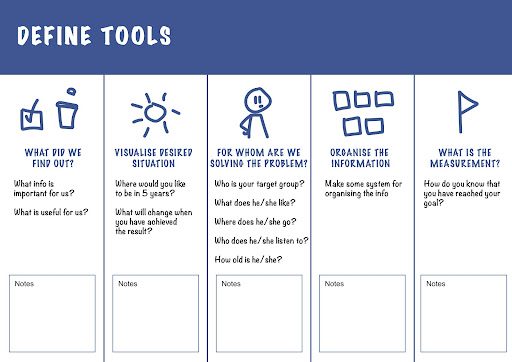
2 DEFINE
In order to create a solution to the problem it is important to identify who we are solving the problem for. Who is our target group and whose problem is it actually? What is relevant?
Visualisation is again a powerful tool here to conceptualise the target and the desired change. It is good to outline what are the things that will change in the process and how you can measure the change. How do you know you have reached your goal?
In this stage the main aim is to redefine the problem statement from the target’s point of view and not yet work on the possible solutions to the problem.
3 IDEATE
The purpose of ideation is to generate as many ideas as possible. Do not stop to ponder whether an idea is good or bad but just keep brainstorming. Quantity over quality.
Brainstorm in groups. You can build on others’ ideas and mirror your ideas with others.
When the flow of ideas runs dry, pick the best ones for further elaboration. How could the ideas be realised? Again, use brainstorming to expand on your chosen ideas and visualise them so everybody can see them. Create a visual presentation of your idea.
Before you carry on further with your idea, it is good to do a reality check: is your idea actually feasible? Will you face some obstacles or challenges with your idea? How realistic is it actually?
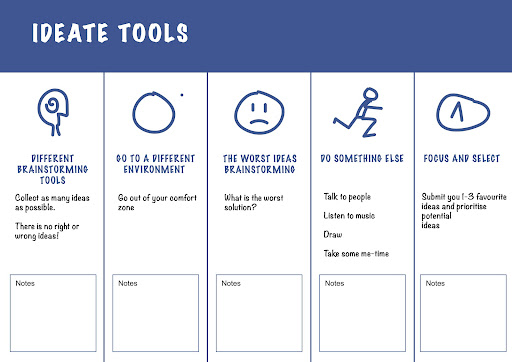
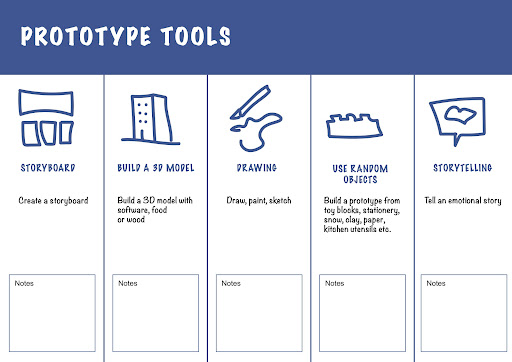
4 PROTOTYPE
Now it is time to build a model of your idea to make it more concrete and also for others to better get a grasp of what the idea was about.
The prototype can be built, drawn or introduced in the form of a story.
Use any materials that are suitable for the purpose. You might go for cardboard or paper, Lego bricks or some other random objects, role play, a story board or a diagram.
Feedback, feedback, feedback. Get feedback and think how you could improve your prototype. Which parts already worked well and what needs to be done differently?
5 TEST
Now it is time to see how the concept works. Whether you are testing your own plan on implementing this method into your teaching or your learners are testing their prototypes, it is important to document the stage for you to be able to estimate the effects of the concept. How did it work? Did it solve the problem set in the beginning of the process?
Again, collecting feedback from the target group helps you to measure the effectiveness and outcomes of the process. The feedback will guide you in refining your concept further. Are there some parts that should be excluded completely? Is there something you should add to the process for it to work better? Which parts work well and should be maintained as they are?
Once you have completed the first round of testing, it is good to plan further ahead. What comes next?
